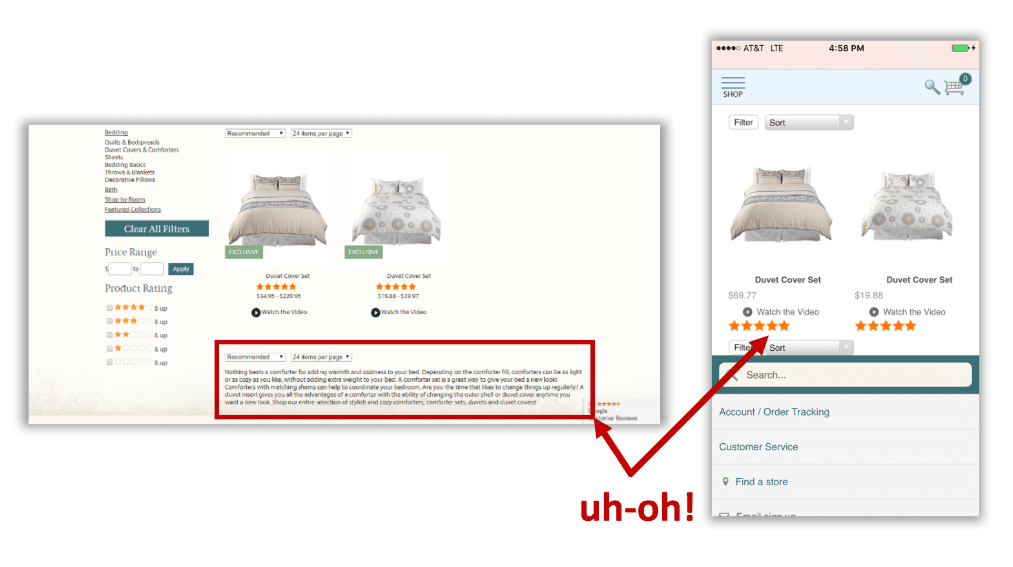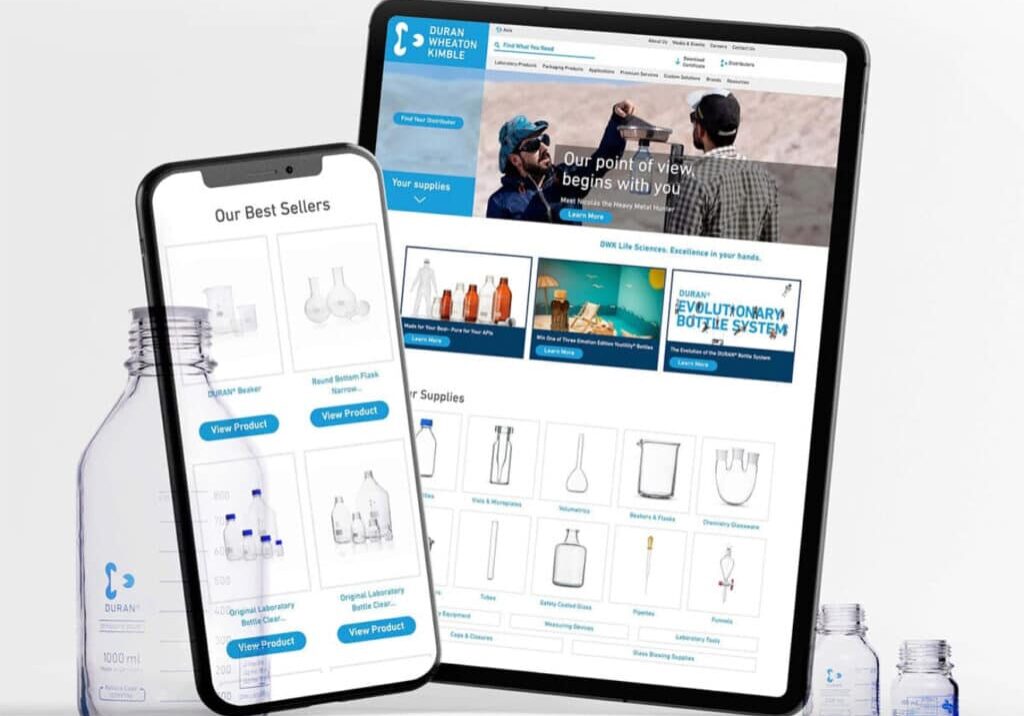SEO & Content Marketing
4 Minutes
Mobile First Indexing and Why It Matters
Well, it’s no MobileGeddon, but Google is at it again. To keep up with the massive switch to mobile traffic we’ve seen over the past few years, Google is making another change to how it evaluates webpages when deciding who gets that coveted #1 spot in the search results.
A Mobile-Friendly Website Has Always Mattered
Since the dawn of mobile devices, it has always been important for sites to be mobile friendly. According to a study by Stone Temple, a whopping 63% of internet traffic comes from mobile devices now. So if you don’t have a mobile-friendly website, that’s a lot of potential clients that you can say goodbye to!
Furthermore, having a mobile-friendly website has been very good for SEO for many years. Two aspects of a webpage that Google considers in its ranking evaluation are Bounce Rate and Click Back.
- Bounce rate is when a user doesn’t click through to another webpage on your website. The user will either leave the webpage by entering a new URL, or by clicking a link that will leave the site.
- Click Back is when a user reaches your webpage, realizes that the site isn’t what they’re looking for, and then clicks the ‘Back’ button to return to the original search results. Google will track the amount of time spent on a webpage before the user clicks back.
If the mobile version of your website sucks, your audience won’t be able to find what they’re looking for. They will either “bounce” to another site meaning a High Bounce Rate (a bad thing), or they will quickly click back to the search results meaning a Low Click Back Time (another really bad thing). Google tracks both of these factors and will assume that you have bad or irrelevant content, meaning you won’t be ranked anymore. Really bad — but also old news.
What’s new is that now Google isn’t just taking your mobile site into account — they’re making it the most important version of your site. With the switch to “mobile-first indexing” over the summer, your mobile site has become more important than ever.
Wait, What Was That About Indexing?
You already know having a mobile-friendly website is important, but how does indexing affect your search ranking?
Mobile-first indexing sounds pretty scary, but it’s actually not so bad. “Indexing” is when Google “reads” your site to determine if it has content relevant to a search. So mobile-first indexing means when Google is evaluating your website to see where you rank (what keywords you have, your bounce rate and click back, all that good stuff), instead of searching your desktop website, they’re gonna search your mobile website.
If you have a mobile-responsive website, this means nothing much is gonna change for you. Your content will be the same across desktop, mobile, tablets — wherever your audience views your webpage, it looks basically the same. Google will scan your mobile version, find all the same great links, keyword density, and relevant content it found on your desktop version, and it’ll keep ranking you at the top of the search results.
If you have a separate mobile version of your website, you might be in a little bit of trouble.

image from: https://www.searchenginejournal.com/googles-mobile-first-indexing-what-it-is-how-you-can-prepare/212104/
If you have a stripped down version of your site for mobile users (m.yoursite.com or yoursite.mobi) with less content than your desktop site, that’s the site Google is going to scan when it’s ranking you. If Google can’t find all the juicy content it knows your audience is looking for on that mobile page, your ranking is going to drop.
Yikes.
Help! What Do I Do Now?
First things first: If you are unsure whether your website is mobile responsive, you can type your URL into Google’s Mobile-Friendly Test or use their Mobile-Friendly Guide for some good tips on how to upgrade your site.
Remember, mobile-friendly is good but mobile-responsive is even better. A mobile-friendly site might look great on a small screen, but if it’s doing that by cutting out important content, Google will ding you for it. Mobile-responsive means you’re always showing the same content, just repackaged to better fit on different sized screens. Google loves when you don’t lose valuable info just because your audience is viewing you from their phone, and your audience will love having your full site at their fingertips too.
If you check these out and realize that your mobile site isn’t up to snuff, Supreme Optimization can also give you some advice in a free 30 minute SEO consultation. You can reach out to us here.
Related Posts
Get a Quote or Ask a Question
- Curious about our process or pricing?
- Need help getting buy-in?
Contact us right away — we’d love to help.
Let’s take a look at your website together and figure out your best options for business growth.

Contact us right away — we’d love to help.
Let’s take a look at your website together and figure out your best options for business growth.



